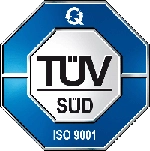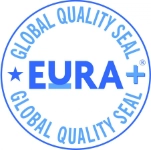In this article we will clarify everything you need to know about the Italian Ecobonus 65. This guide is applicable to private individuals and, among other aspects, defines the conditions for applying and the latest news for the certificate of conformity in 2022.
Consult the news of the 2025 budget law for building bonuses.
Italian Ecobonus 65%: what is it?
The Italian Ecobonus relief consists in the recognition of tax deductions in the amount of 65% of the expenses incurred. These expenses are to be divided into annual installments of equal amount, within a maximum deduction limit for interventions to reduce energy requirements and in general the thermal improvement of the building (Law 296/2006 – art. 1 paragraphs 344-345-346-347).
The 2022 Budget Law confirmed the rules already in force in previous years. Therefore, the tax bonus is also applicable for eligible expenses incurred during 2022 until December 31, 2024. In any case, like all tax deductions, the benefit is allowed within the limit that finds capacity in the annual tax resulting from the income tax return.
These are reductions in Irpef (Personal Income Tax) and Ires (Corporate Income Tax) granted for interventions that increase the level of energy efficiency of existing buildings.
Who is entitled to the 65% Ecobonus?
All taxpayers, residents and non-residents (even if they have business income), who own the property subject to the intervention in any capacity, can benefit from the deduction.
Among natural persons, the following can benefit from the relief:
- Holders of a right in rem on the property;
- Condominium owners, for interventions on common condominium areas;
- Tenants;
- Those who have the property on loan.
The relief also applies to taxpayers who earn business income (natural persons, partnerships, corporations), but only with reference to the instrumental buildings that they use in the exercise of their entrepreneurial activity (Resolution of the Revenue Agency no. 340/2008).
A cohabiting family member or member of a civil union of the owner of the property can also benefit from the bonus, in addition to a separated spouse who has been assigned the property registered to the other spouse, and a “more uxorio” partner for expenses incurred from 1 January 2016.
In these cases, however, it is essential that the invoice is issued in the name of the person commissioning the work, who belongs to these categories.
What is included in the 65% Italian Ecobonus and what are the spending limits?
The 65% deduction concerns interventions that increase the level of energy efficiency of existing buildings and which include the following expenses:
- Existing building envelope (e.g. walls, windows, roofs and floors): maximum tax deduction value €60,000*
- Installation of solar panels for hot water production: maximum tax deduction value €60,000
- Replacement of winter air conditioning systems with systems equipped with air or water condensing boilers: maximum tax deduction value €30,000
- Purchase and installation of solar screens: maximum tax deduction value €60,000
- Purchase and installation of winter air conditioning systems equipped with heat generators powered by combustible biomass: maximum tax deduction value €30,000
* the value refers to the maximum deduction, not to the expense, for example in the case of the casing the maximum admissible expense will be €92,308).
Italian Ecobonus deductions reduced from 65% to 50%
From 1 January 2018 the deduction has been reduced from 65% to 50% for some types of intervention:
- Purchase and installation of windows including frames;
- Purchase and installation of solar screens;
- Replacement of winter air conditioning systems with systems equipped with condensing boilers of at least class A.
Italian Ecobonus 65%: how to apply?
The IRPEF deduction linked to the Ecobonus is due to the person who pays the invoice by bank transfer. This person must be the holder of a right in rem, as previously stated.
The subject, owner or purchaser, even of a portion of a housing unit, can benefit entirely from the relief, provided that he or she is the one who bears the expense and is the registered owner of the invoices.
For interventions carried out on the common condominium areas, it is necessary to indicate the tax code of the condominium and that of the administrator or other condominium owner who makes the payment.
Ecobonus credit recovery methods
There are 3 different ways for taxpayers to recover the credit deriving from sustaining the Ecobonus expense:
- Using the 65% deduction in the income tax return in constant installments over 10 years;
- Obtaining the discount on the invoice by the supplier who carries out the work;
- Transfering the credit to credit institutions and financial intermediaries.
Documentation to be kept for Italian Ecobonus 65%
To benefit from the tax relief it is necessary to have the following documents:
- Invoices proving the expenses actually incurred for the implementation of the interventions;
- Receipt of the bank or postal transfer through which the payment was made;
- ENEA certificate drawn up by a qualified technician to be sent within 90 days of the end of the works;
- Receipt of sending via internet or receipt of registered mail to Enea;
- Information sheet relating to the interventions carried out, drawn up according to the scheme reported in Annex E or F of the implementing decree.
In the event that the interventions have been carried out on common parts of buildings, a copy of the assembly resolution and the thousandths table for the distribution of expenses must also be kept and, if necessary, exhibited.
Conformity certificate for Italian Ecobonus 65%
With Decree-Law 157/2021 of 11 November 2021 “Urgent measures to combat fraud in the tax and economic benefits sector” (in the Official Journal from 12 November 2021), the government introduced important innovations aimed at combating fraudulent behavior relating to bonuses from the Revenue Agency.
The most significant innovation of the Fraud Decree concerns the extension of the certificate of conformity also to incentives other than the 110% Superbonus, but only if the taxpayer opts for the transfer of the credit or the discount on the invoice. Conversely, if the decision is made to deduct the expense from the IRPEF, the affixing of the visa would not be necessary.
With the exception of the facade bonus, in the case of credit transfer or invoice discount, the conformity certificate is not required for interventions falling within free construction or for an amount less than €10,000.



















